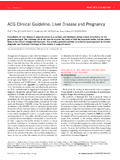Transcription of Ultrasound imaging of the gallbladder - …
1 Ultrasound imaging of thegallbladderRAD Magazine, 37, 436, 16-18By Dr G Thind and Dr V RudralingamUniversity Hospital of South Manchester NHSF oundation gallbladder on Ultrasound appears as apear-shaped structure lying in the inferior mar-gin of the liver, along the principal plane sepa-rating the anatomic right and left gallbladder has a well-defined thin wallseparated by a fluid filled anechoic lumen. Theposterior wall often has an apparent brighter andthicker wall due to through transmission ofsound.
2 TechniqueAssessment of the gallbladder is performed routinely with a5-7 Mhz curved array sector probe. The high-resolution linearprobe (10-15 Mhz) can be used in selected cases to providegreater detail of the gallbladder wall (figure 7b).Evaluation of the gallbladder is performed on a routinesweep across the liver in the sagittal and transverse obliqueplane. A subcostal oblique sweep in the cranial to caudaldirection will demonstrate the middle hepatic vein craniallyand when angled caudally will identify the patient must be examined in at least two positions,typically in the supine and decubitus position.
3 This shouldbe performed after adequate fasting, usually a minimum offour hours. The consumption of food, particularly a fattymeal, causes the gallbladder to contract thus potentiallyobscuring intraluminal pathology such as gallstones and canpotentially mimic pathology such as acute and normal variantsThe gallbladder is divided into neck, body and fundus. Thefundus is the most anterior the region of the neck,there may be an infundibulum also known as theHartmann s pouch which is a common site for impaction ofgallstones (figure 2a).
4 Although rare, the most common ectopic position of thegallbladder is under the left lobe of the liver followed by anintrahepatic this variant is impor-tant, as this may preclude laparoscopic surgery. Failure to identify the gallbladder is usually due to inad-equate fasting, previous cholecystectomy and a contractedgallbladder due to a chronic cholecystitis. A gas filled gall-bladder and also a gallbladder packed with stones may alsobe misinterpreted as a bowel loop.
5 The wall echo shadow(WES) complex is a useful sign seen in the latter1(figure 1).Variations in the Ultrasound appearances of the gall-bladder have been well described. Commonly the gallbladdermay have several junctional folds. The term Phrygian capthe most common manifestation, referring to a fold in thegallbladder fundus resulting in a localised pouch-like disease is common worldwide, with increasedprevalence in Europe where 10% of all adults have gall-stones.
6 Risk factors include female sex, increasing age, obe-sity, pregnancy, diabetes and haemolytic disorders. Womenare three times more likely to have gallstones during thefertile years then men. By the age of 80, 60% of both menand women have gallbladder acts as a reservoir for storage of bile pro-duced by the liver. It can become supersaturated with cho-lesterol, leading to crystal precipitation and subsequentgallstone formation. There are two major types of gallstones.
7 80% are choles-terol stones, which are associated with bile supersaturatedwith cholesterol. The remaining 20% are pigment 10-20% of gallstones contain enough calcium to be vis-ible on plain is highly sensitive in the detection of stoneswithin the gallbladder and is the gold standard test for thedemonstration of appearances of gallstonesare variable dependant on the size and number (figures 1,2a and 2c). On US scans, gallstones are hyperechoic and cause pos-terior acoustic shadowing as with calculi elsewhere in thebody (figure 2a).
8 Small gravel-like stones typically less than5mm in size may not shadow but will remain addition to the appearance, mobility is another key fea-ture that is helpful to distinguish gallstones from dynamic and real time imaging with Ultrasound allowsfor the assessment of the patient in different positions, forinstance in the decubitus position that may allow the stonesto roll into the majority of patients with gallstones areasymptomatic, between will develop complicationsper annum, this rises to if the patient already hassymptoms, for instance biliary sludgeBiliary sludge is a mixture of particulate matter and bilethat occurs when solutes in bile is a longlist of predisposing factors, for instance critical illness, preg-nancy and total parenteral nutrition.
9 Biliary sludge canresult in biliary colic and other complications seen with gall-stones, for instance acute cholecystits and acute typical sonographic appearance of sludge is low levelechoes within the gallbladder with no acoustic shadowing(figure 2a). The biliary precipitates can coalesce and formsludge balls that can create unwanted anxiety and mimicpolypoidal lesions. The lack of internal vascularity, mobility and normal gall-bladder wall are all useful pointers of biliary sludge (fig-ures 9a and 9b).
10 When in doubt, contrast enhancedexamination is indicated with Ultrasound , CT or cholecystitisThe most frequent complication of gallstones is acute chole-cystitis (Figures 2a, 2b and 2c). The risk of acute chole-cystitis or serious complication with a history of biliary colicis about 1-2% a Ultrasound findings of acute cholecystitisinclude:1, Significantly distended gallbladder >4cm wide (figure 2b)2, Wall thickening >3mm. 3, Gallstones typically impacted stone in the neck(figure 2c)4, Pericholecystic fluid or focal supporting features are hyperaemia of the gall-bladder wall on Doppler examination (figure 4b).





